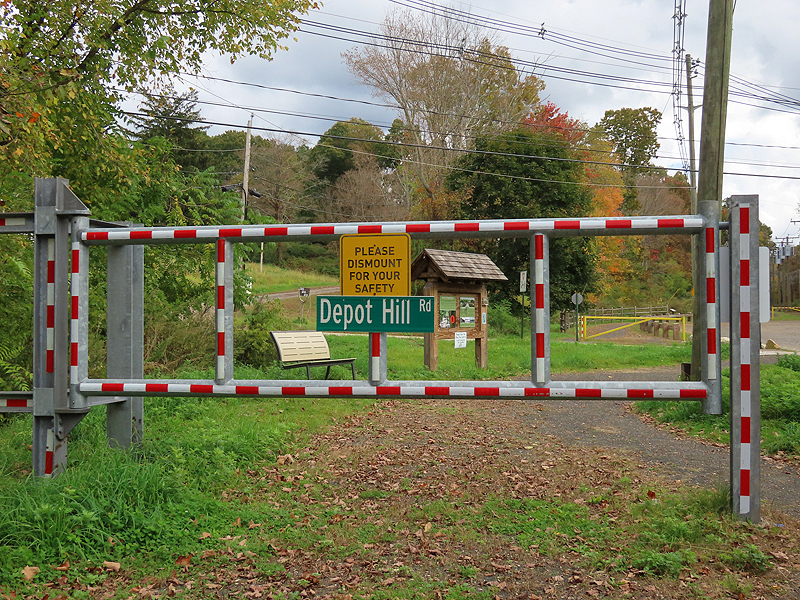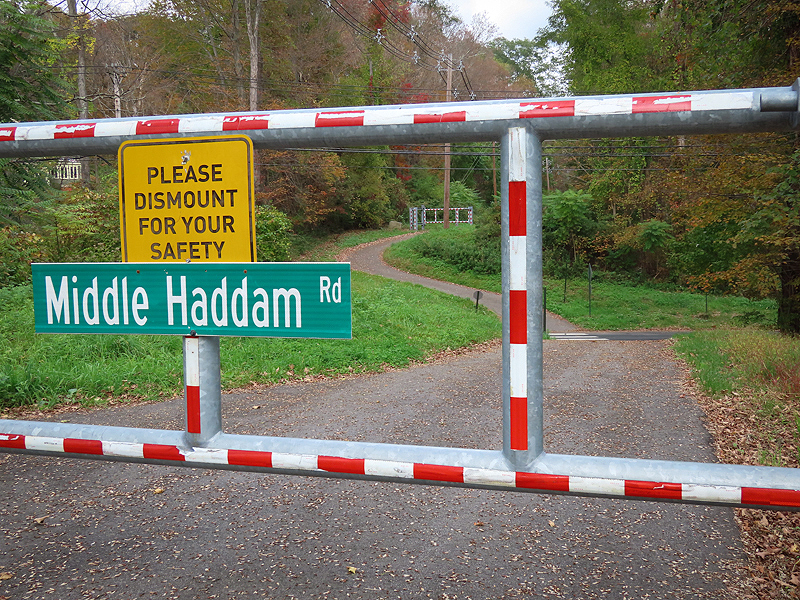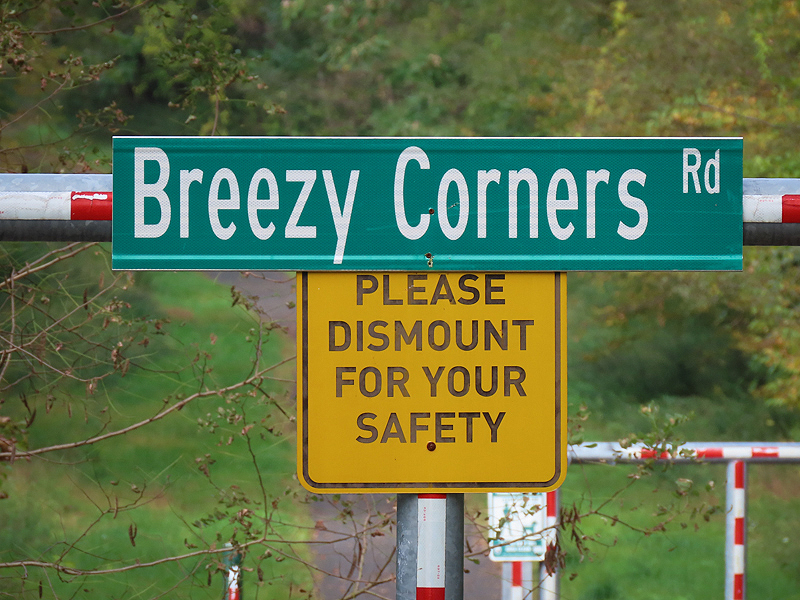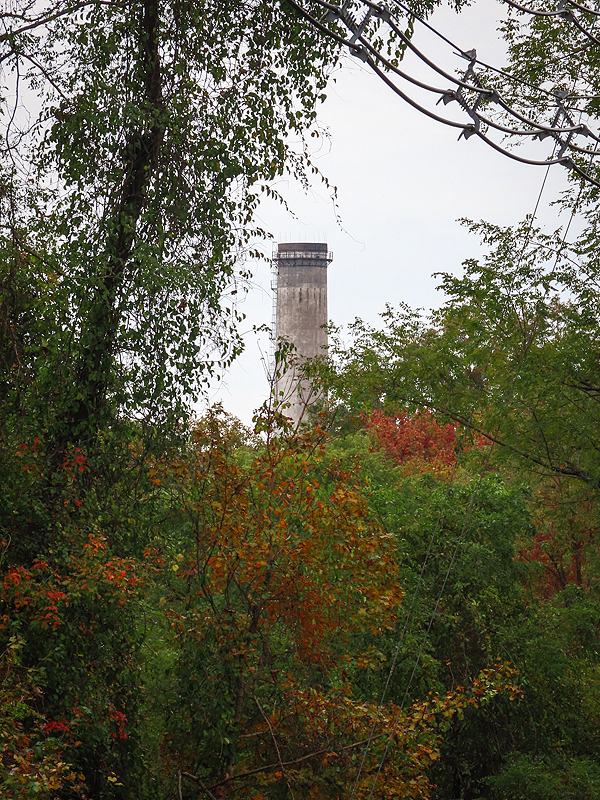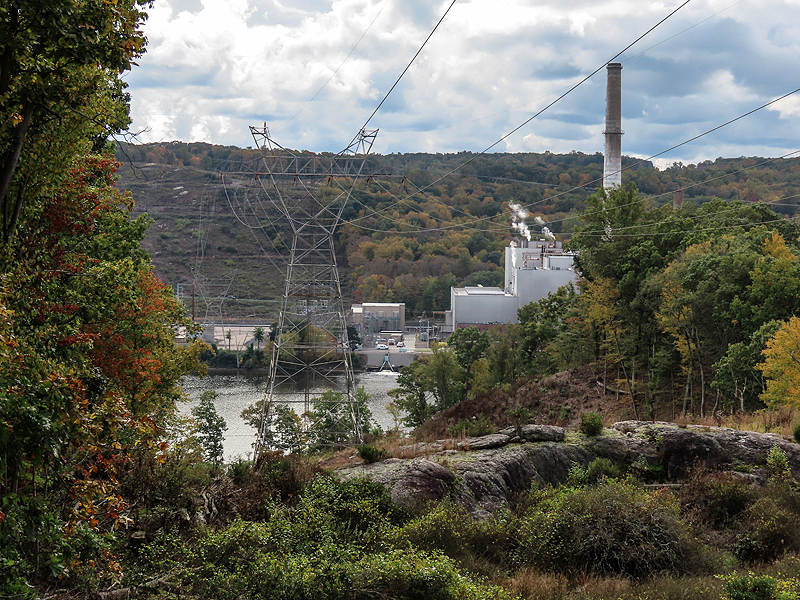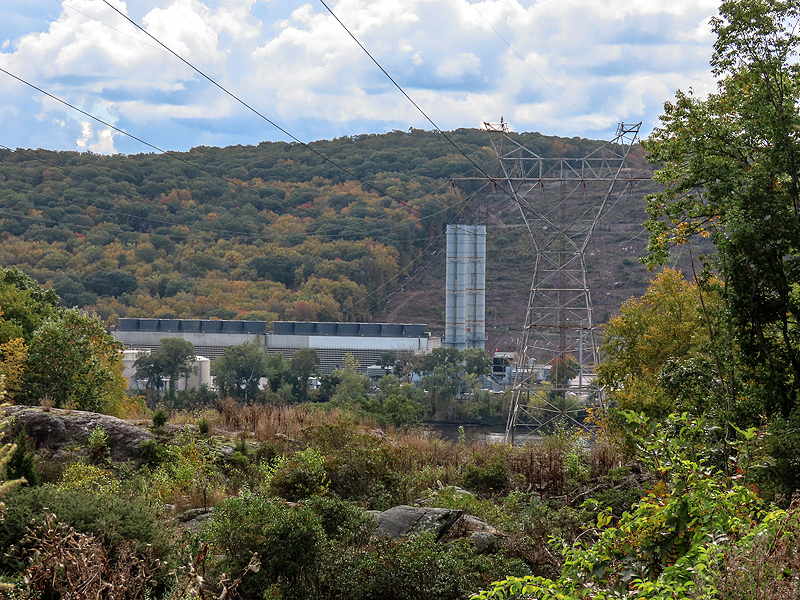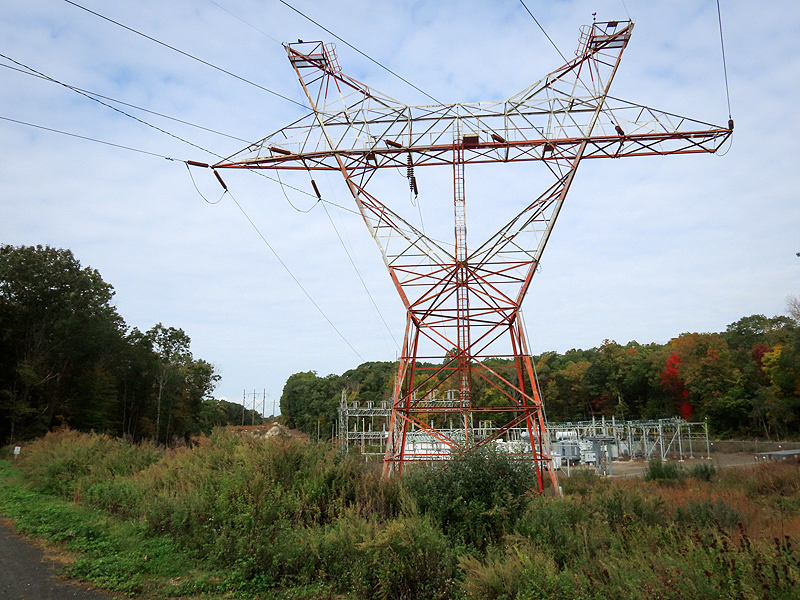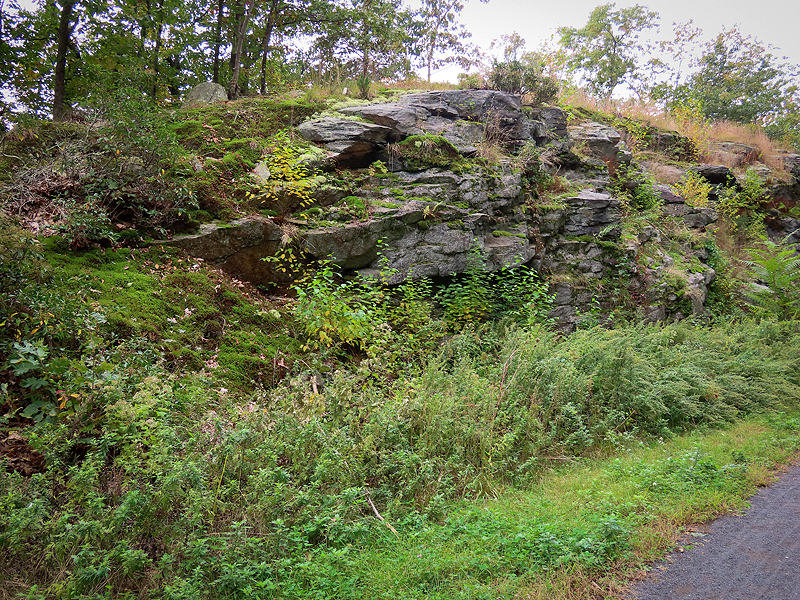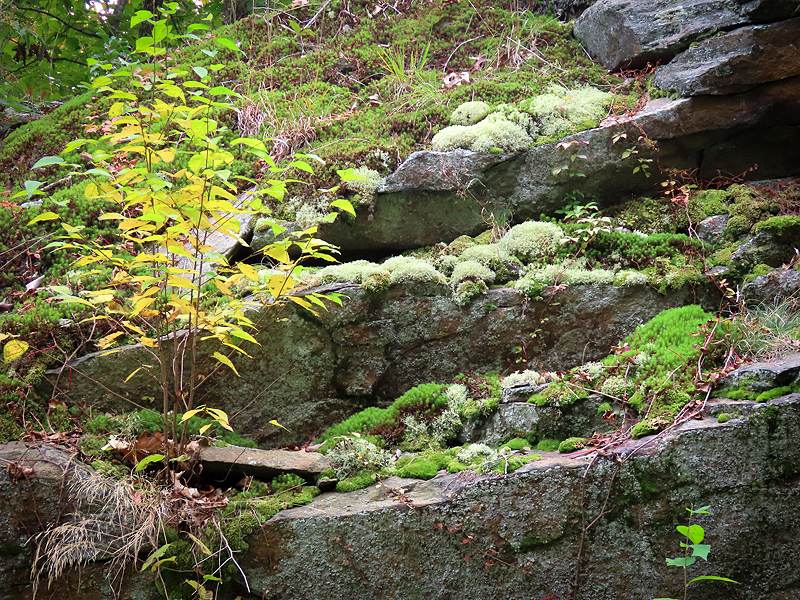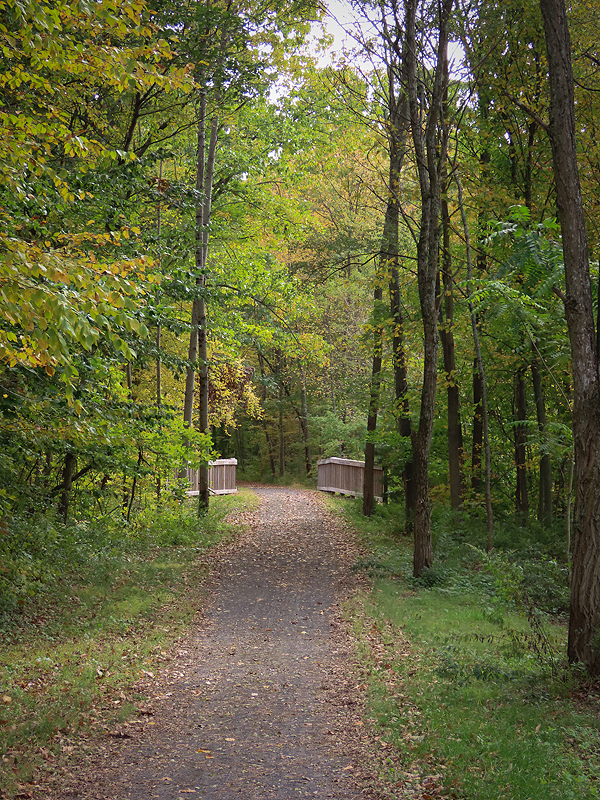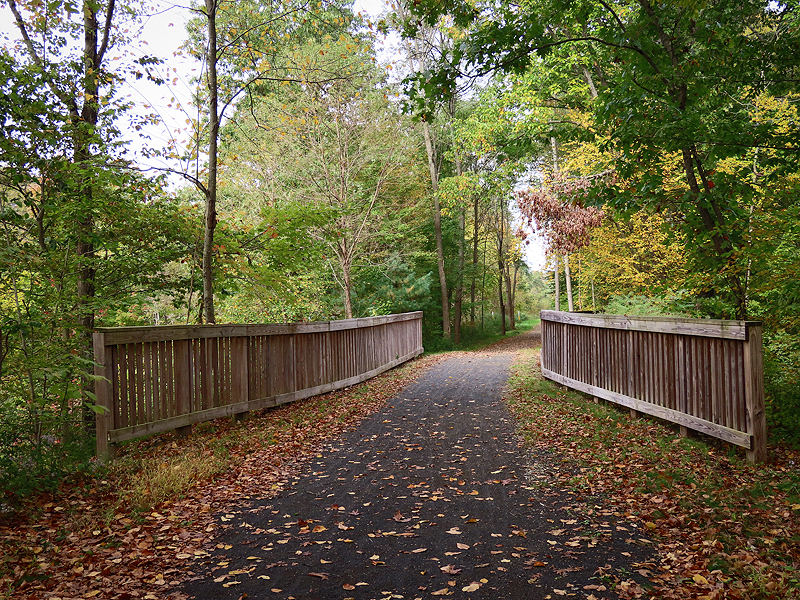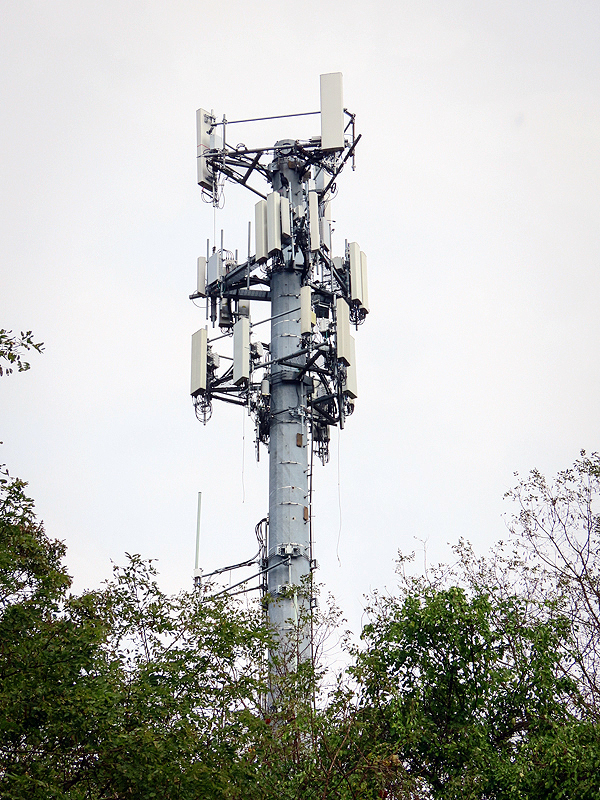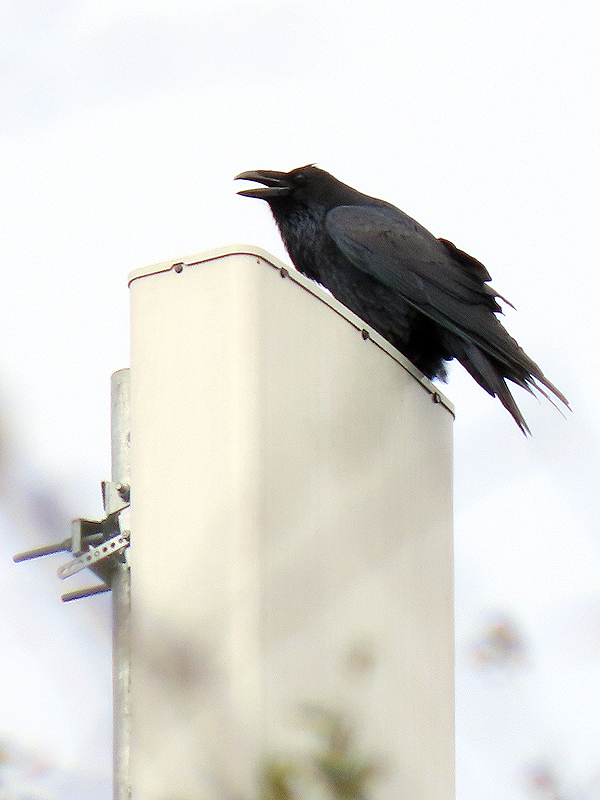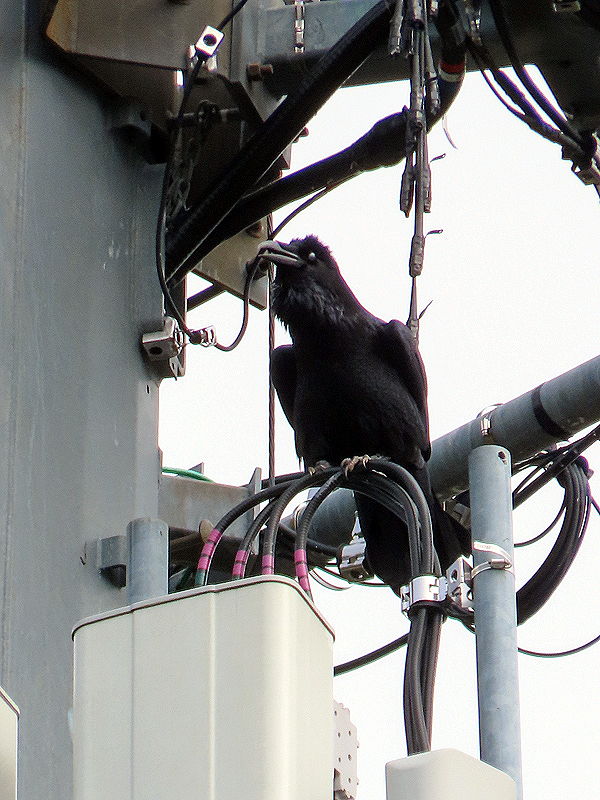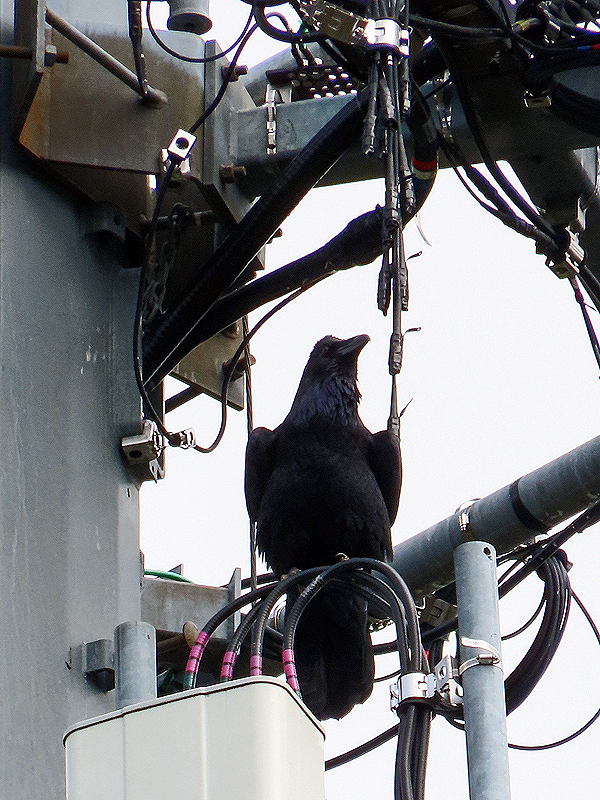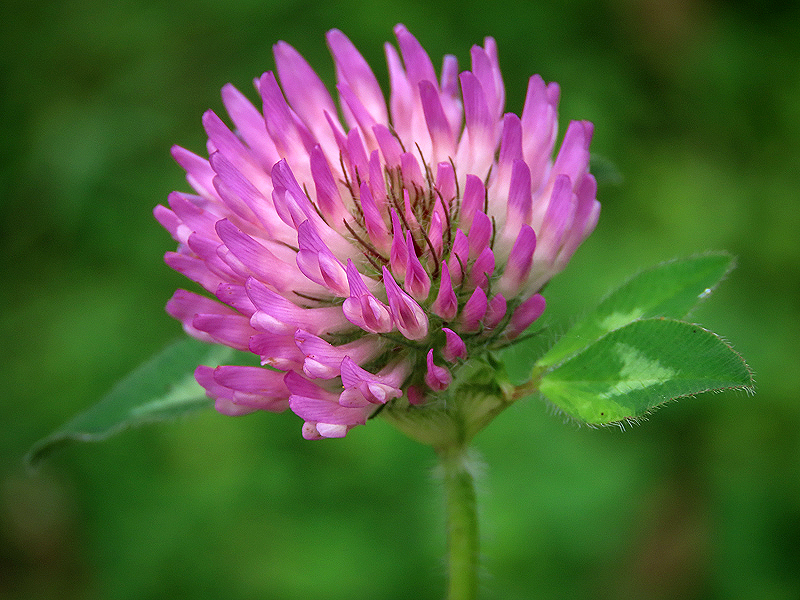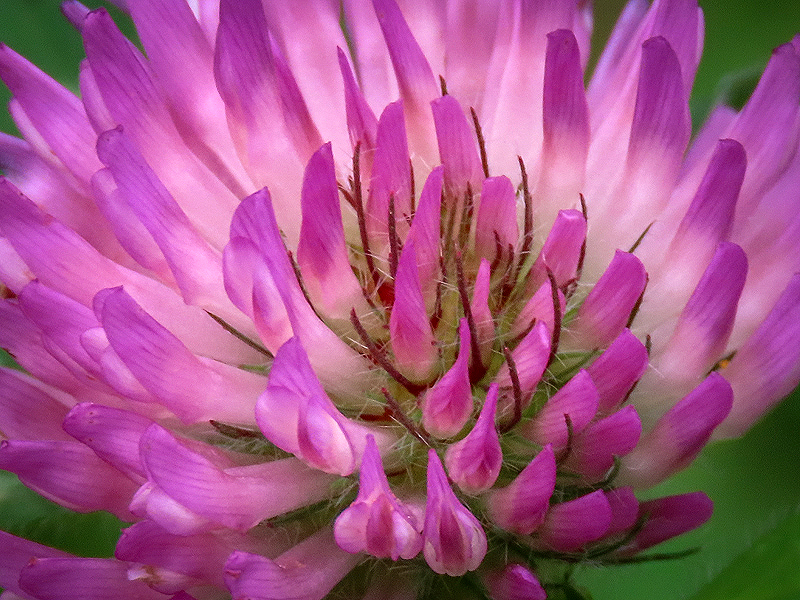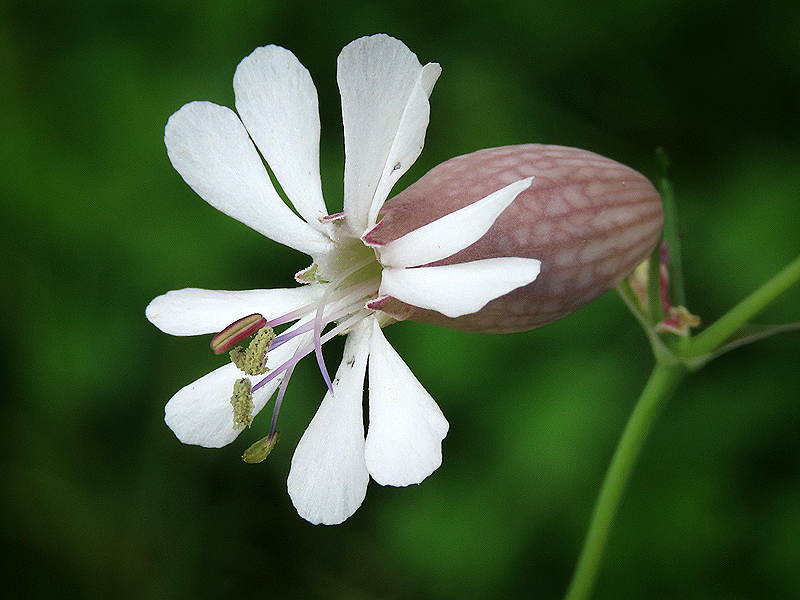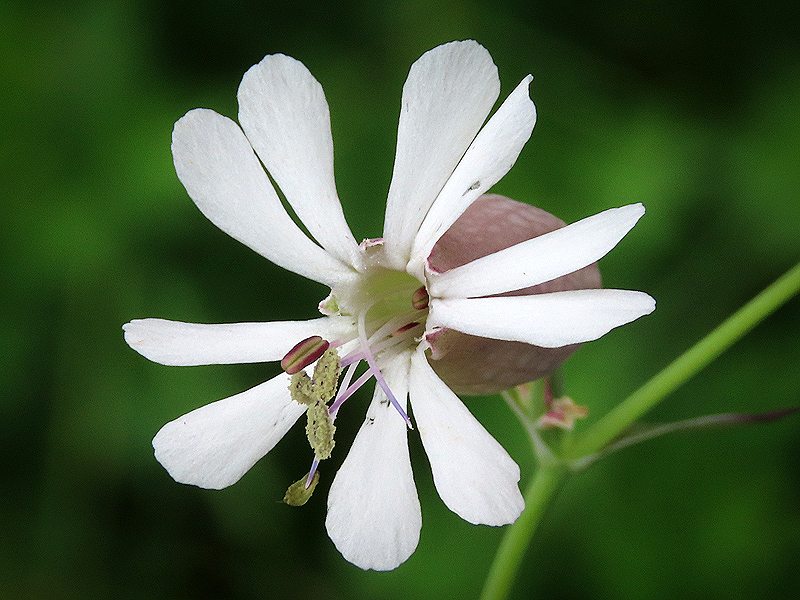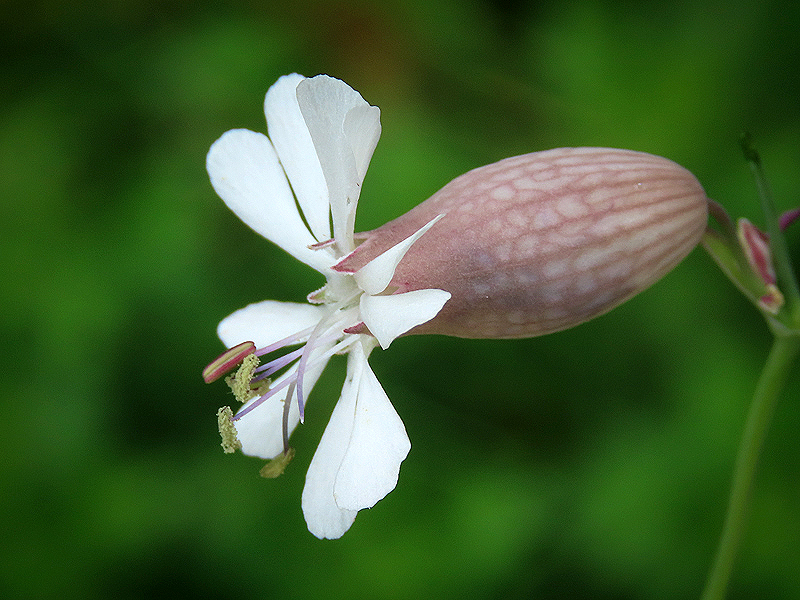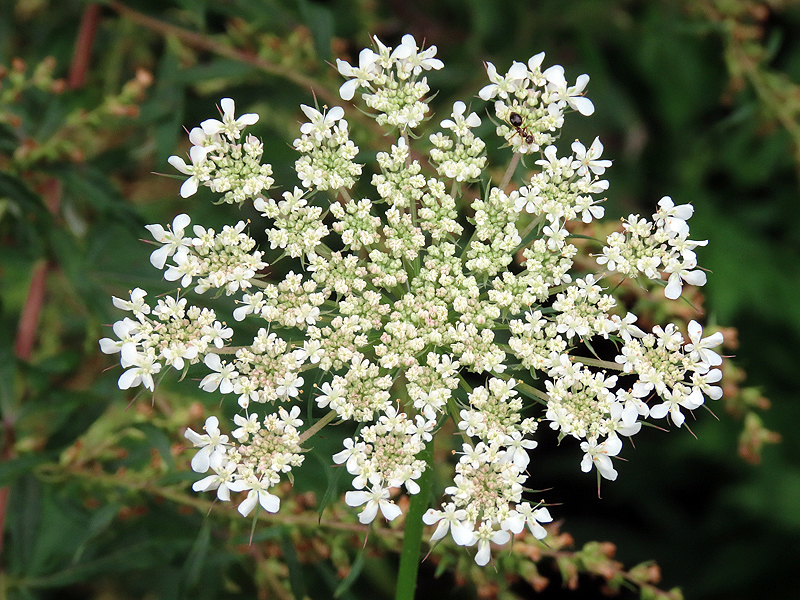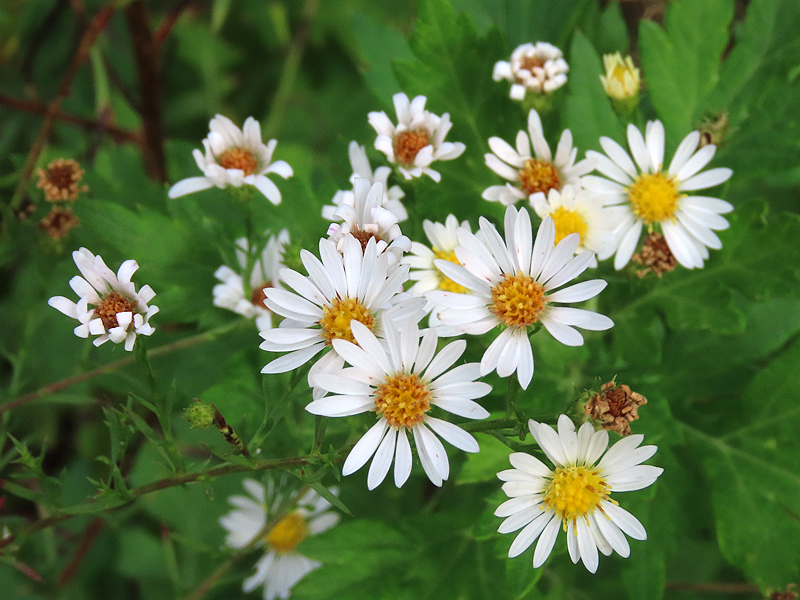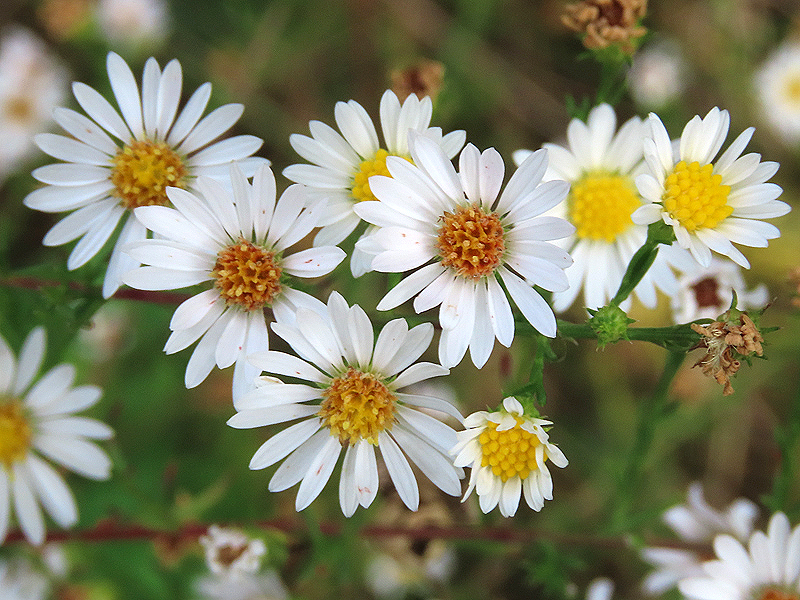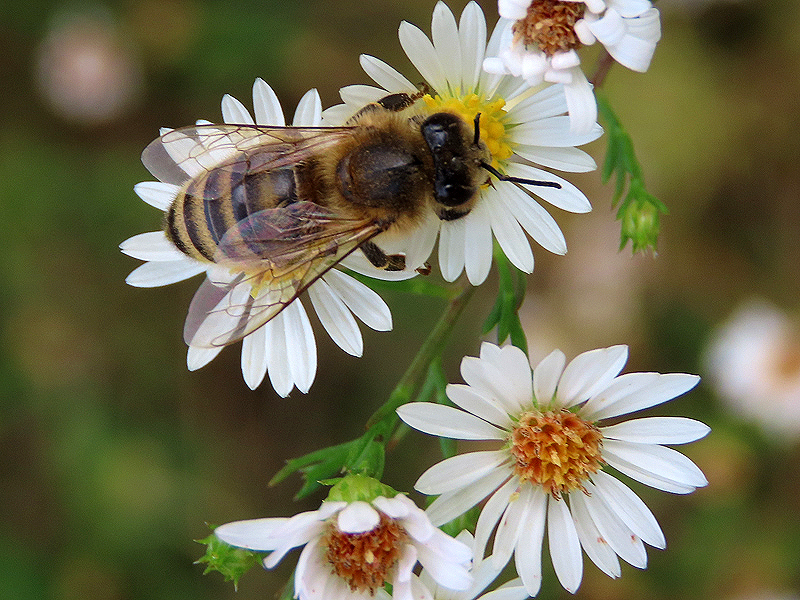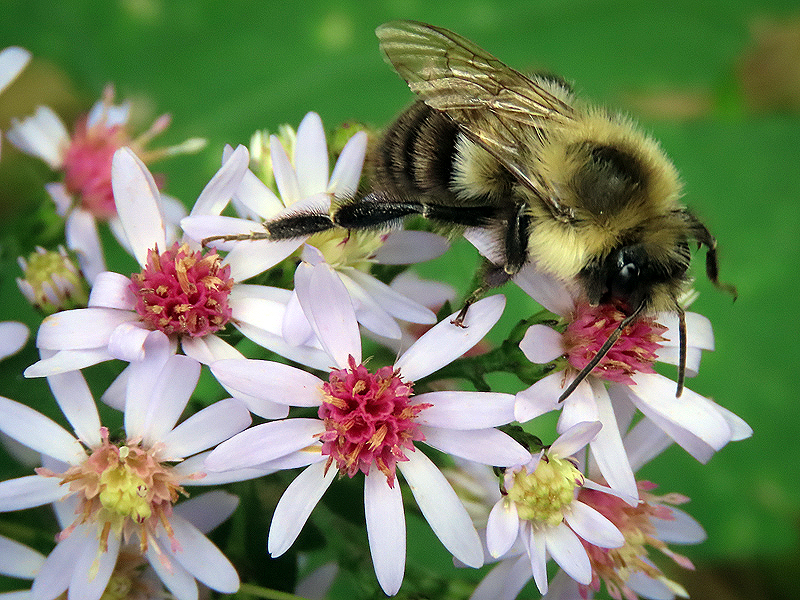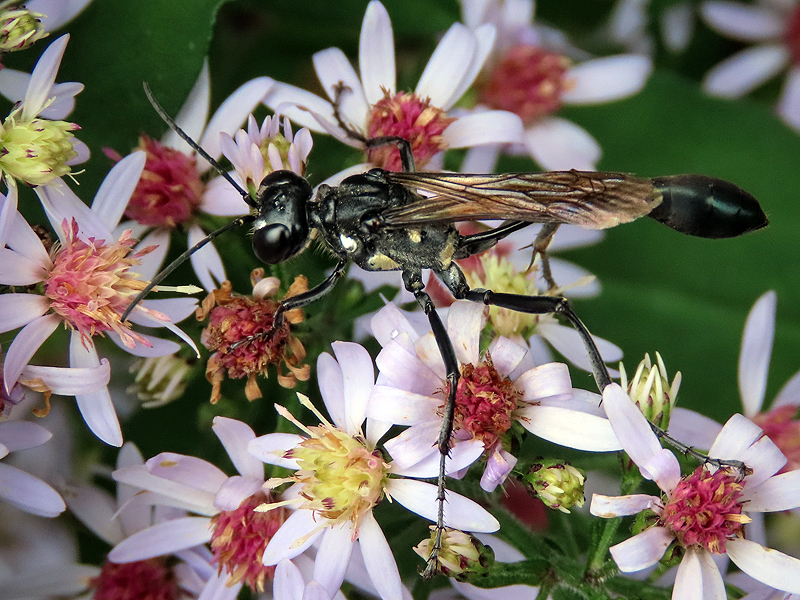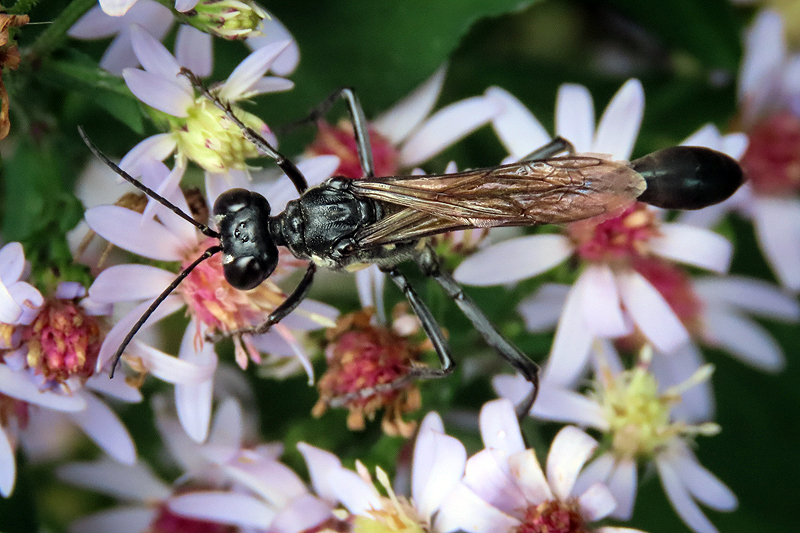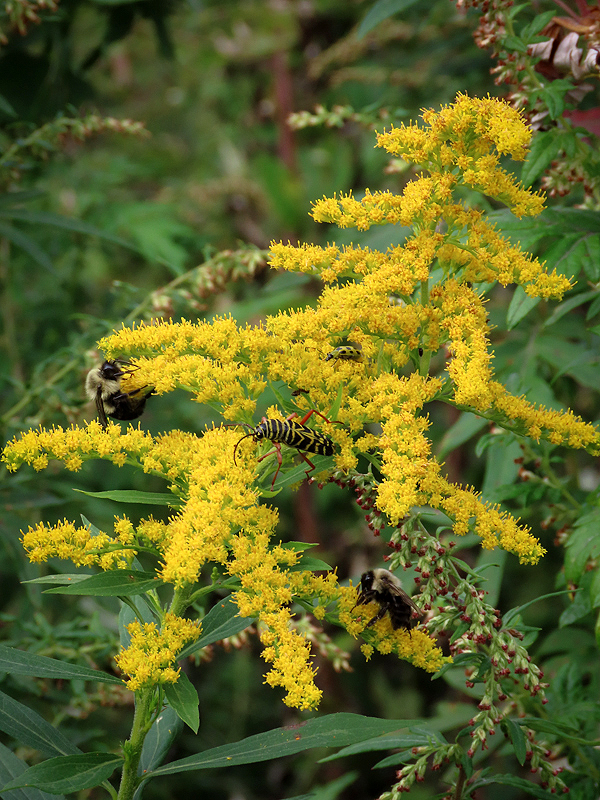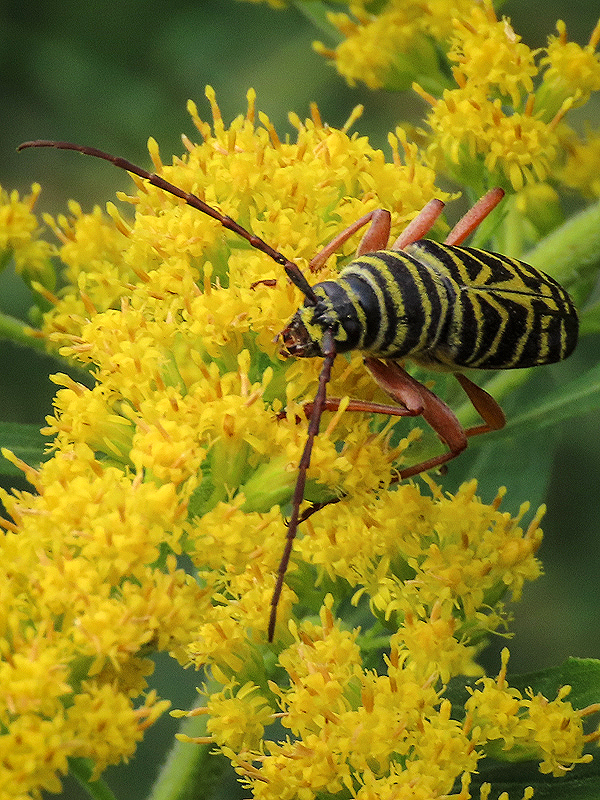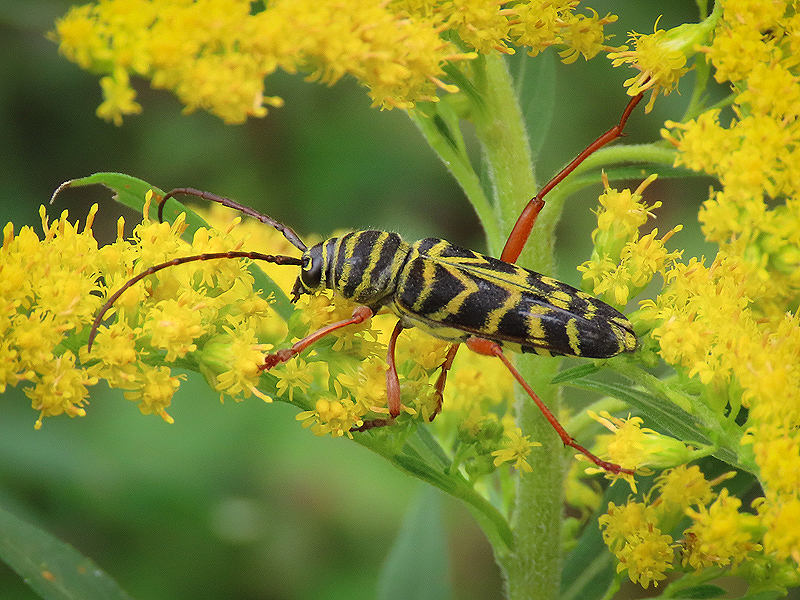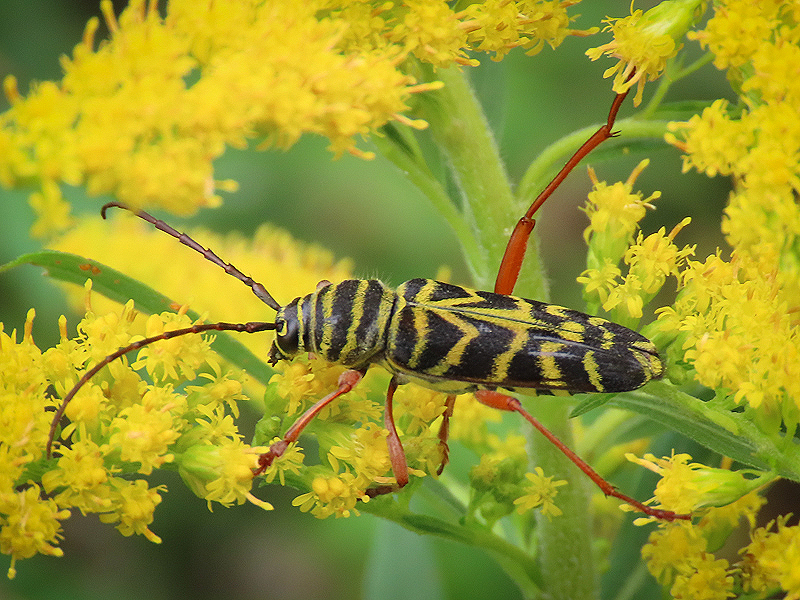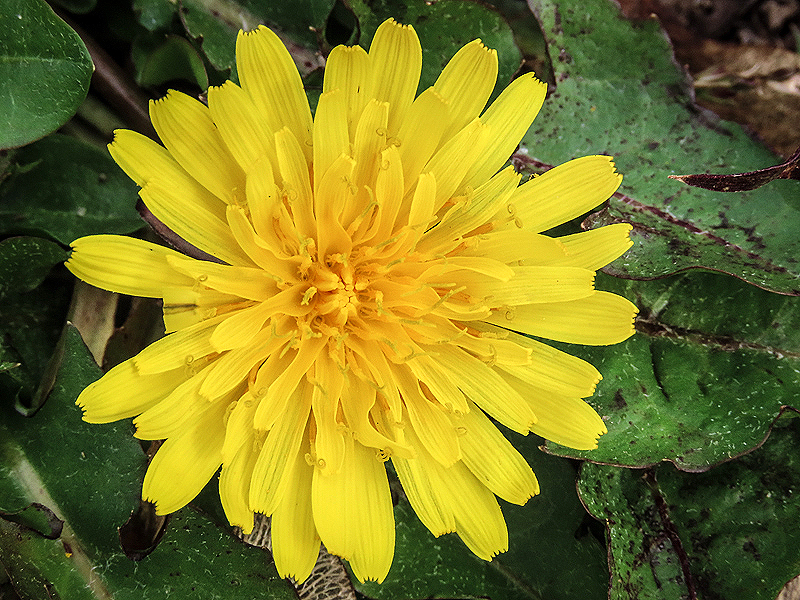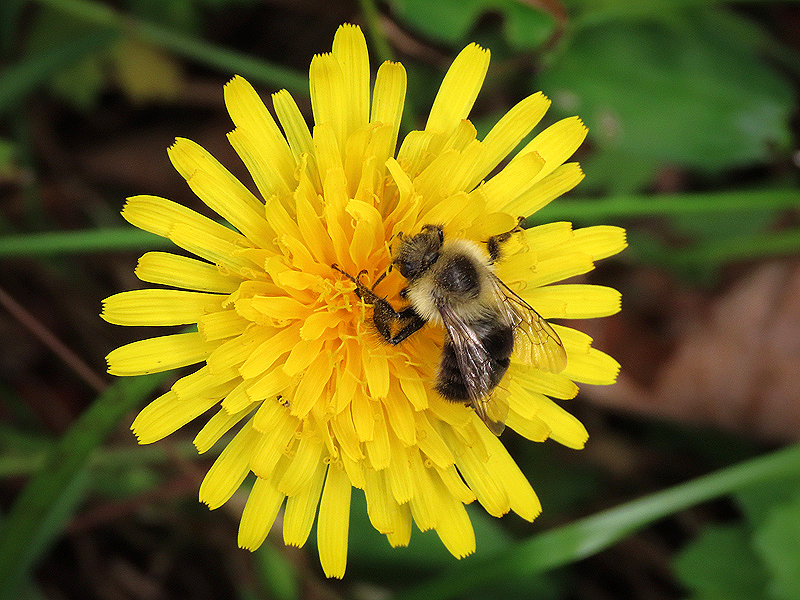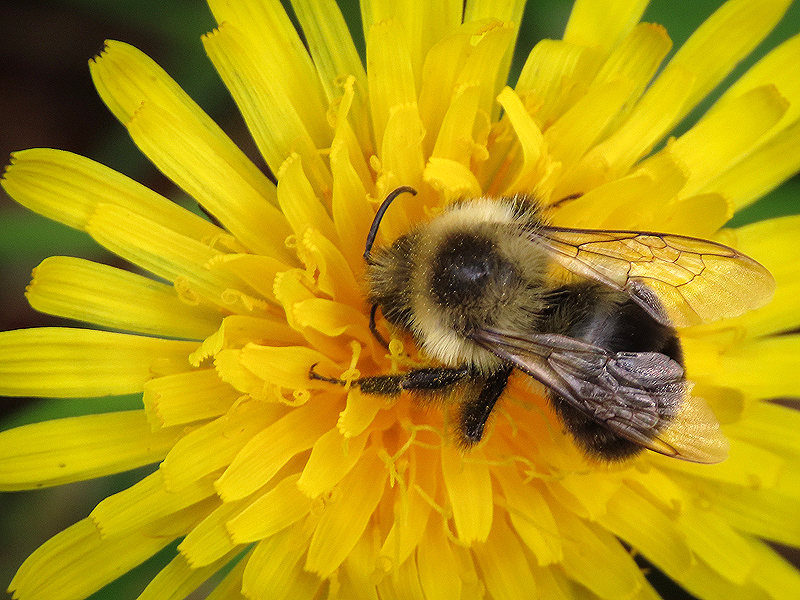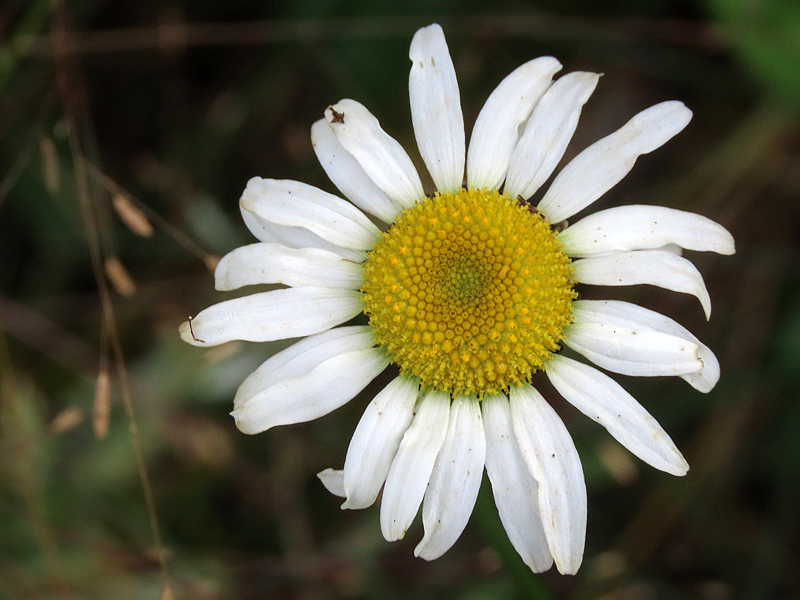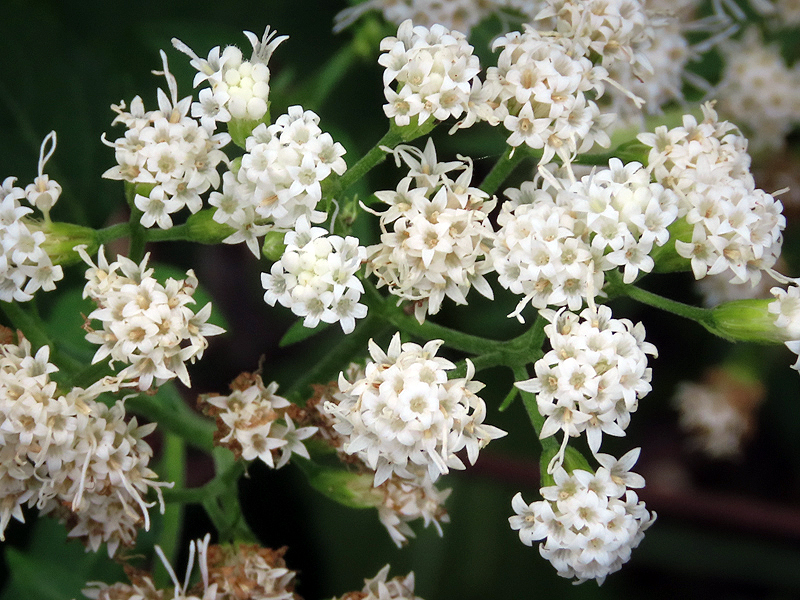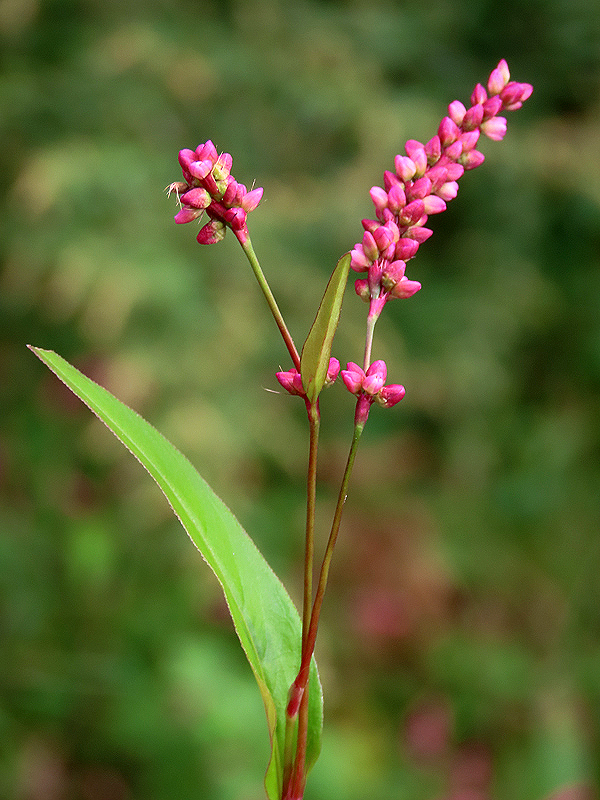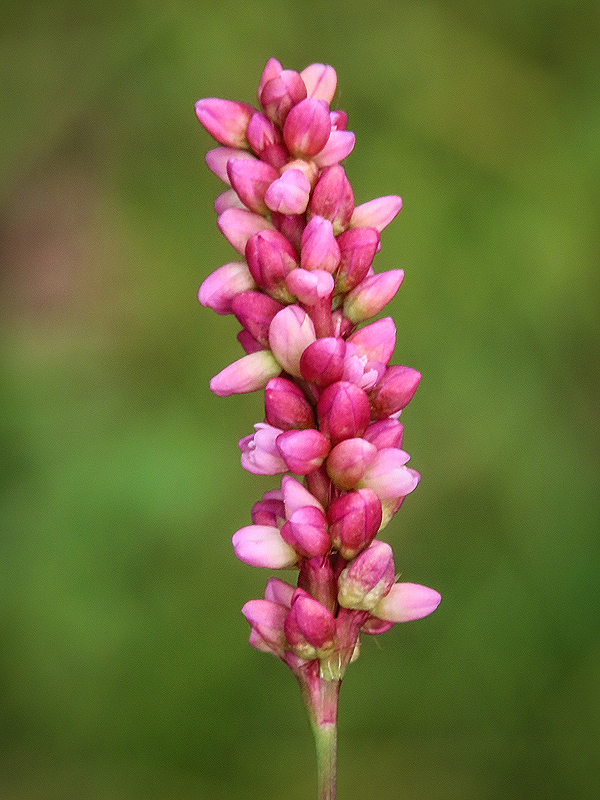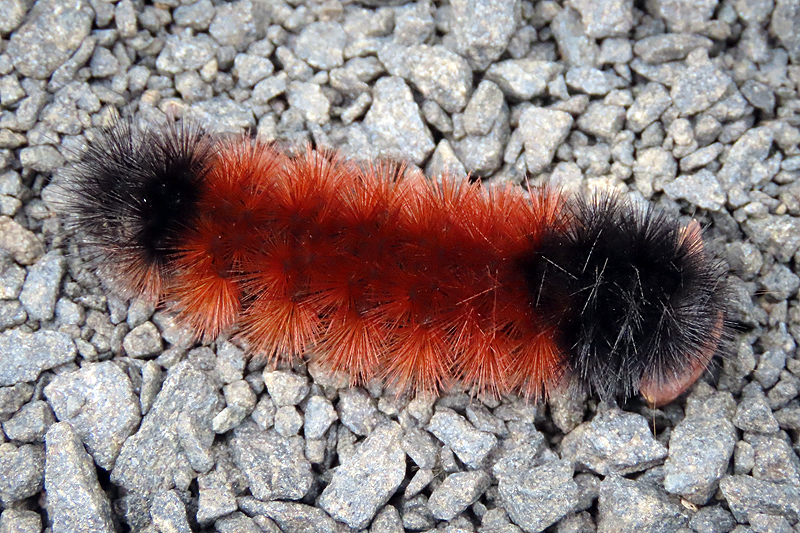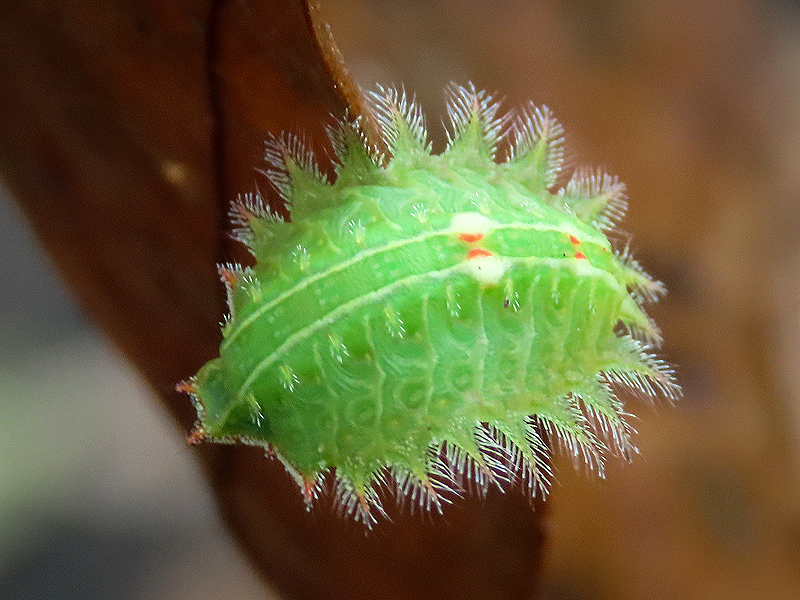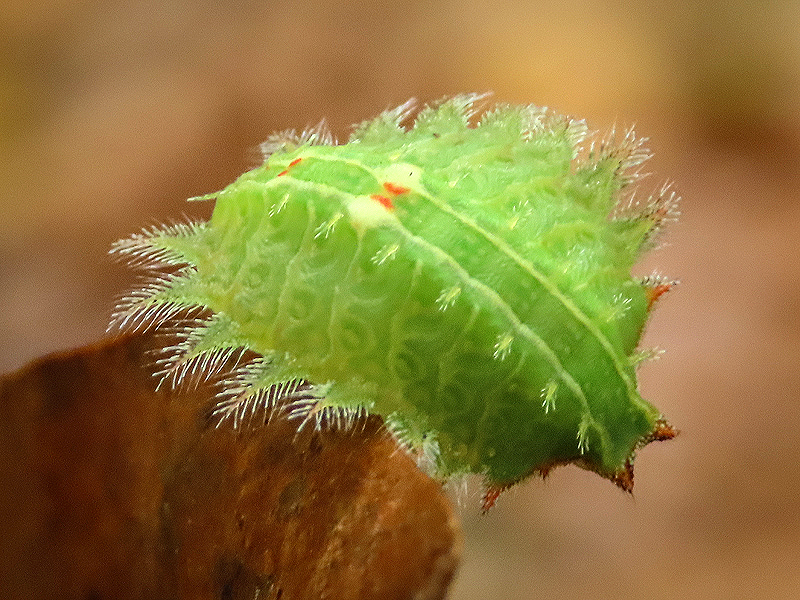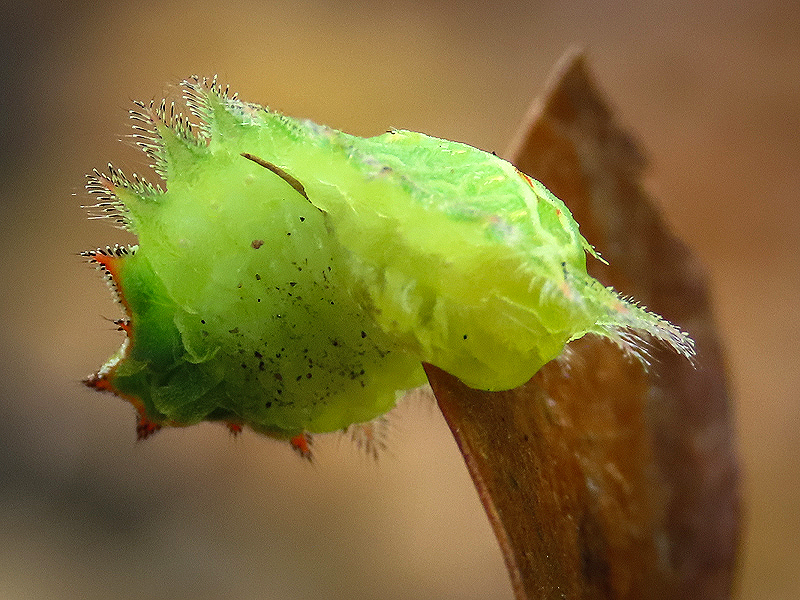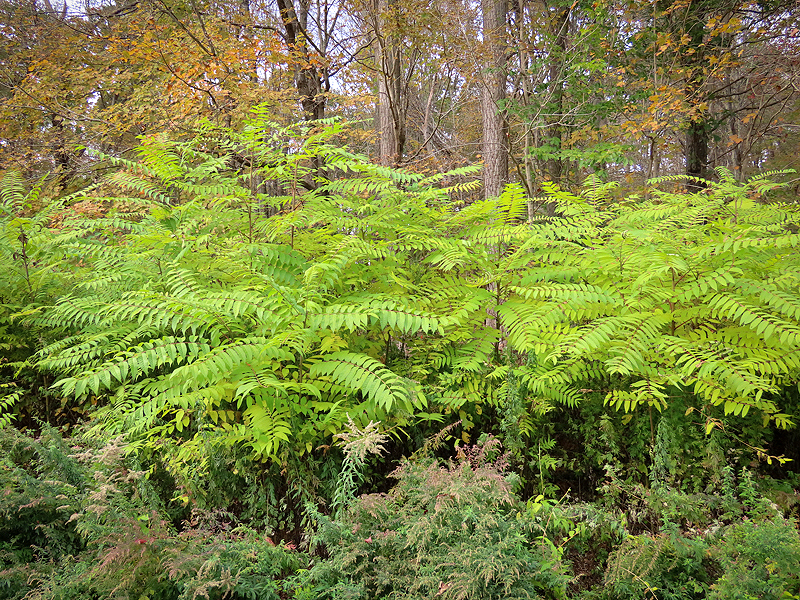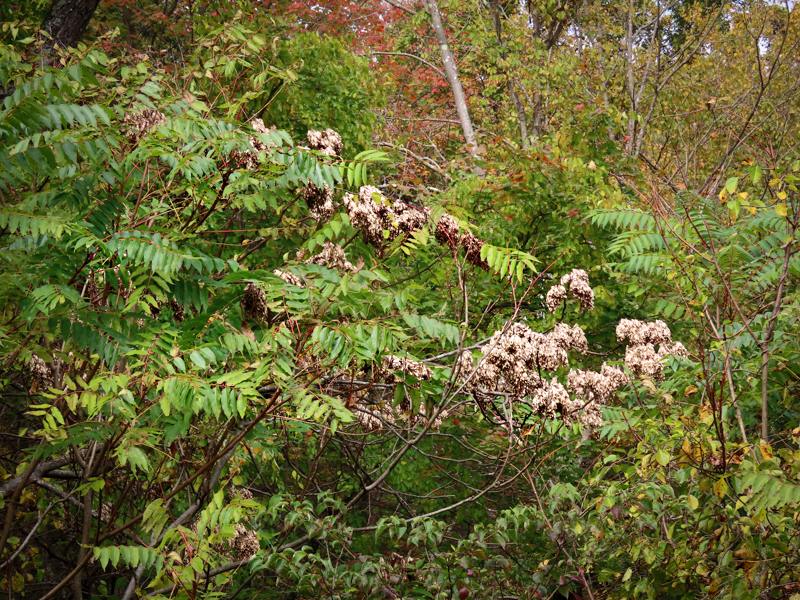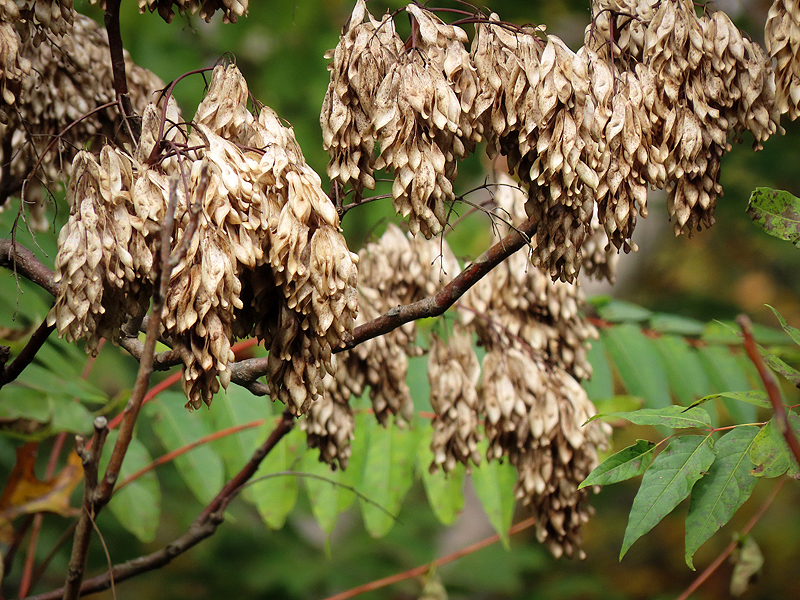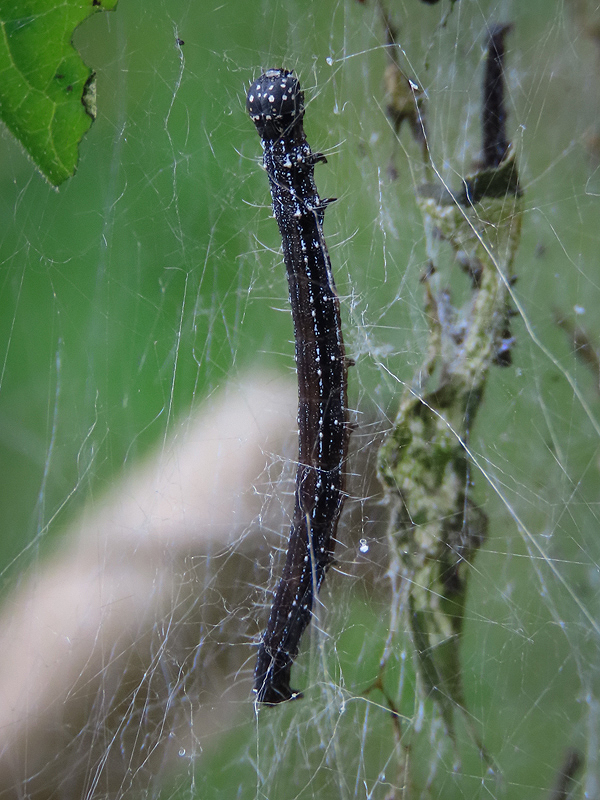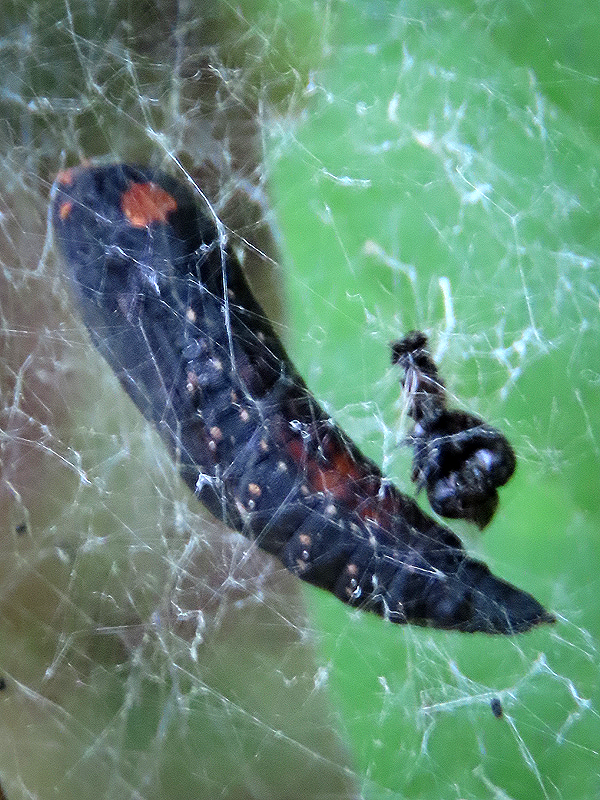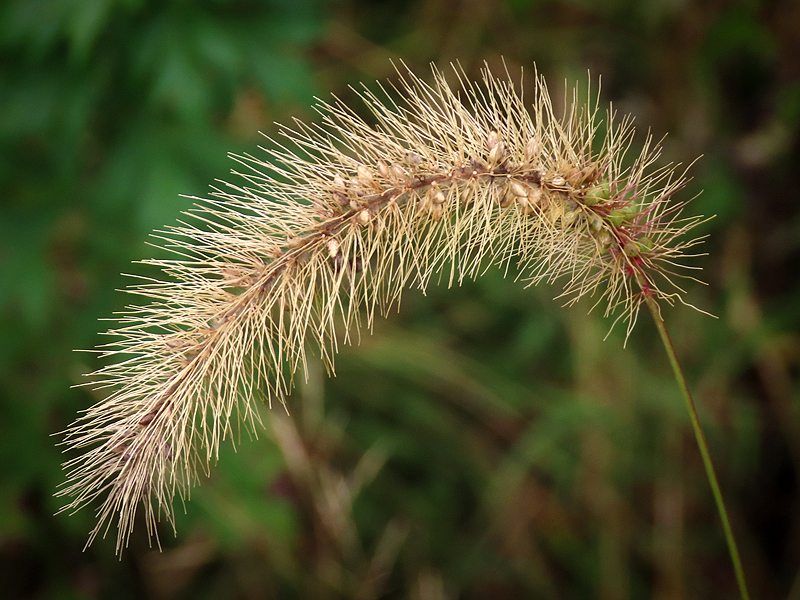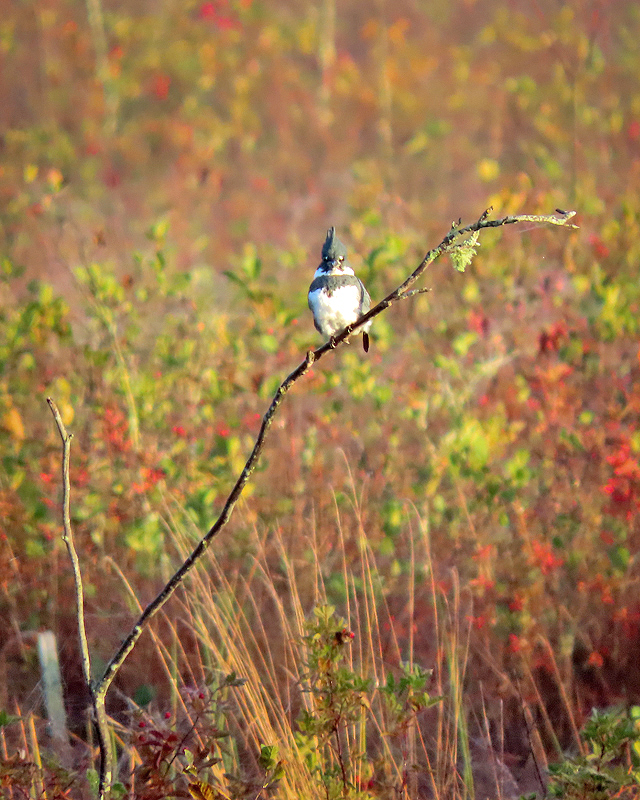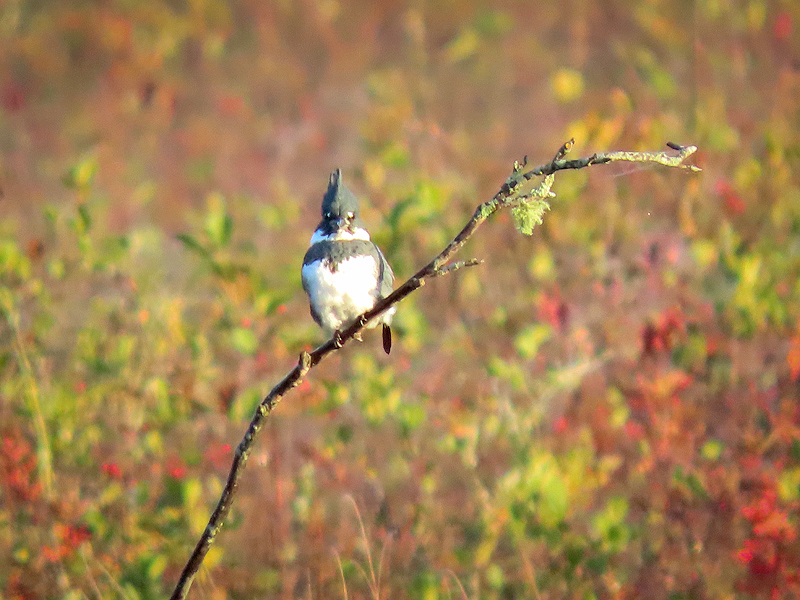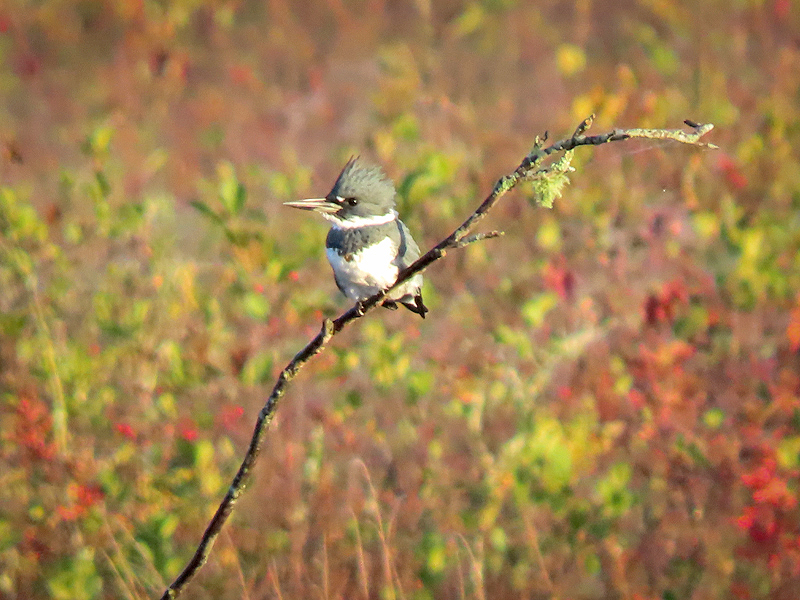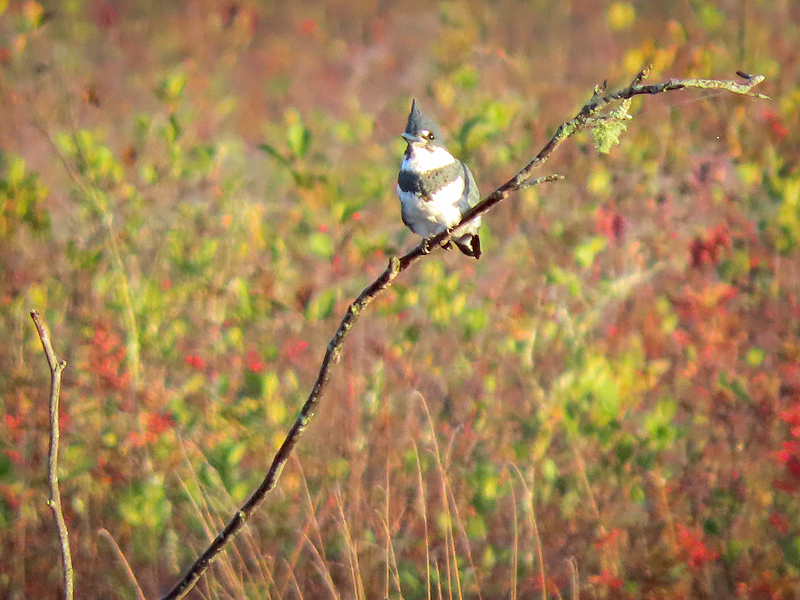Along the Air Line... 2023 - Fall, Part 5 The Air Line Trail in Eastern Connecticut - Stan Malcolm Photos |
HOME: Air Line... 2023 Pages Menu Stan's FlickR Albums |
October 18th. An afternoon walk west from Depot Hill Road. (I usually walk east.) |
I crossed Middle Haddam Road in two places... |
...and turned around at Breezy Corners Road. This was my first time on this pleasant section of the Air Line Trail. The section started in Cobalt and contuned into Portland. |
I spotted this massive chimney but couldn't see the base... |
until I was further west. It's part of the Gemma Power Systems Middletown Repowering Project... |
The powerlines cross the Connecticut River... |
...and then cross the Air Line Trail. |
Some nice rock cuts and scenery along the trail. |
|
|
|
This large cell tower... |
...was home to a Common Raven (Corvus corax). |
Check out that beak. |
|
A few Red Clover (Trifolium pratense) blossoms still around. |
|
Bladder Campion (Silene vulgaris). |
|
|
A small head of Queen-Anne's Lace (Daucus carota). Second growth after mowing. |
One of the little Asters. |
|
Honey Bee (Apis mellifera). |
Bumble Bee (Family Bombidae). |
A Thread-waisted Wasp (Family Sphecidae, Ammophila procera). |
|
Bumble Bees and a Locust Borer (Magacyllene robiniae) on the last of the Goldenrod (Solidago sp.). |
The Locust Borer up close. |
|
|
Dandelion (Taraxacum officinale). |
Bumble Been (Family Bombidae). |
|
One last Ox-eye Daisy (Leucanthemum vulgare, which long ago I learned as Chrysanthemum leucanthemum). |
White Snakeroot (Ageratina altissima). Read about it here: https://dendroica.blogspot.com/2011/09/s-is-for-snakeroot.html |
One olf the Smartweeds (Polygonum sp.). |
|
Lots of Woolly Bears (Pyrrharctia isabella) wandering around... |
...including this teeny one. |
A Crowned Slug caterpillar (Isa textula). The spines contain poison and given their lateral placement may be a defense against attacking ants. |
The head is held retracted under the first dorsal thoracic plate (orange in the photos). |
They undulate along on medial suckers rather than the prolegs of other caterpillars. |
Lots of Ailanthus Trees (or Tree of Heaven, Alianthis altissima). Thankfully, no invasive Spotted Lanternflies (Lycorma delicatula) on them. Read about this rpidly spreading invasive insect here: https://portal.ct.gov/caes/caps/caps/spotted-lanternfly---slf |
Some of the trees had set seed. |
|
I found this Ailanthus Webworm (Atteva aurea) caterpillar in, what else, its silken webs in an Ailanthus Tree. |
There were several more caterpillars and pupae like this one in the same silk webbing. |
Foxtail Grass (Setaria sp.). |
October 19th. Back at Raymond Brook Marsh and the male Belted Kingfisher (Ceryle alcyon) was on a usual perch. |
|
|
|
